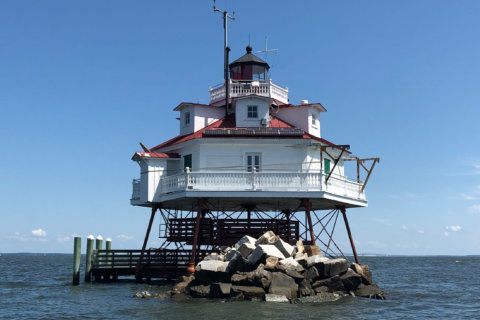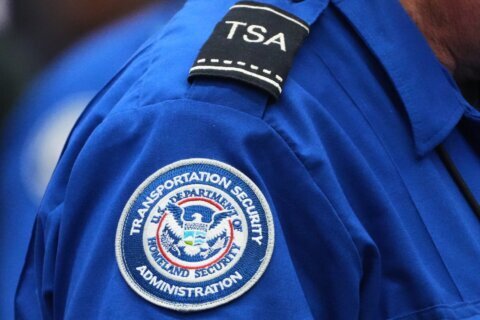This article was republished with permission from WTOP’s news partners at Maryland Matters. Sign up for Maryland Matters’ free email subscription today.
This content was republished with permission from WTOP’s news partners at Maryland Matters. Sign up for Maryland Matters’ free email subscription today.
Maryland must run MARC trains all day and in both directions, and it must expand service into other states, if it is to connect workers and students with job and educational opportunities that are available around the region, a coalition of federal, state and local officials said on Wednesday.
The officials, including Sen. Chris Van Hollen (D) and Montgomery County Executive Marc B. Elrich (D) urged the General Assembly to approve two measures that have been introduced this session.
House Bill 710 and Senate Bill 516, the Equitable and Inclusive Transit–Oriented Development Enhancement Act, would expand the More Jobs for Marylanders Program and make it easier for companies and local governments to locate businesses near transit stations.
The Maryland Regional Rail Transformation Act, HB 778 and SB 514, would require the Maryland Department of Transportation to advance plans to expand MARC commuter rail service.
Currently, MARC trains only run during the morning and evening commutes. The measure, which has attracted bipartisan support, would require the agency to run Brunswick, Camden and Penn Line trains all day and in both directions. It would also require MDOT to produce plans for expanded service into Western Maryland and to add service to Arlington, Va., and Newark, Del.
“There is a strong demand for skilled workers,” said Jay Corbalis, an official with JBG Smith, a Bethesda-based real estate firm that focuses on transit-oriented development, including two Arlington projects — Amazon’s second headquarters and Virginia Tech’s new “innovation” campus.
“We’ve calculated that run-through service of MARC’s trains into Virginia would bring an additional 755,000 Maryland residents within commuting distance of those new jobs, creating new opportunities for the state’s workforce in the process,” he added.
Officials spoke at a morning press conference at the New Carrollton transit station, which is served by Metro rail and bus, Amtrak, MARC and Greyhound. As they spoke, workers just a few feet away were in the process of demolishing a parking garage to make room for a new garage that will facilitate an ambitious mixed-use development plan.
Van Hollen said the federal infrastructure law — enacted by Congressional Democrats in tandem with the Biden administration — will provide the state will $7 billion over five years, including $1.8 billion for transit. Maryland will also have the opportunity to compete for an additional $90 billion in federal aid, he said.
“We need to be ready. Maryland needs to be ready to compete for that $90 billion,” said Van Hollen. “What this state legislation is all about is making sure Maryland is in a good position to compete for those federal funds and build out our MARC system and our transit systems.”
Elrich said expanding rail into Western Maryland would take “thousands and thousands” of cars bound for Montgomery, the District of Columbia and Northern Virginia off Interstate 270 each day.
“Transportation [accounts for] 40% of the pollution in Montgomery County,” he said. “Getting people out of cars and into buses and trains is the most effective tool we have to reduce greenhouse gases.”
He said that current MARC service, with trains that run toward job centers in the morning and home in the evening, is insufficient to serve many workers. He also noted that Frederick, Howard, Montgomery and Prince George’s all saw signification populations gains in the last decade.
“These are places that are growing and are going to need transit solutions, not just more auto solutions,” Elrich said.
At a recent briefing for a House Appropriations subcommittee, Maryland Transit Administrator Holly Arnold said that the state is in conversations with Virginia and Delaware officials — and with leaders at CSX, Amtrak and Union State in D.C. — about expanding MARC service. She also said MTA has several long-term studies underway.
But Arnold cautioned that track and bridge constraints are a significant challenge, as are ongoing construction efforts in other states.
“We are looking at run-through service on all three lines,” she said. “I wish I could say right now that we’re going to have pilot service next year. The issue is really the train slots available on Long Bridge [over the Potomac River], and Virginia and CSX are telling us there are no slots available.”







